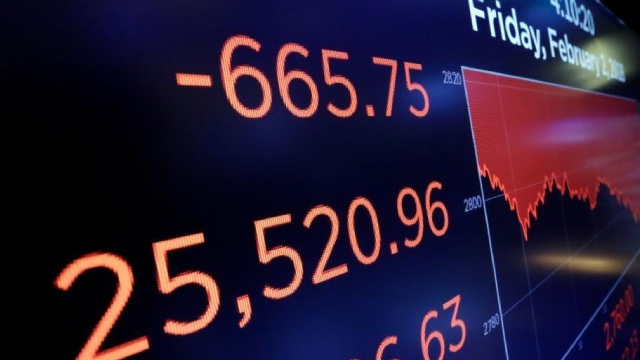The Fading Optimism in the Financial Markets after Donald Trump’s Second Inauguration
On January 20, 2025, Donald Trump took the oath of office for his second term as the President of the United States. The ceremony was held amidst great fanfare and optimism, with many investors believing that the next four years would bring about continued economic growth and prosperity. However, as we move further into 2025, it has become increasingly clear that this optimism was misplaced.
A Closer Look at the S&P 500
One of the most prominent indicators of the financial markets’ health is the S&P 500 index. This broad market index is widely regarded as a barometer of the overall health of the US economy. Since Trump’s second inauguration, the S&P 500 has seen a significant decrease in returns, with many investors expressing concerns about the direction of the economy under the current administration.
The Reasons Behind the Fading Optimism
There are several reasons why the optimism that accompanied Trump’s second inauguration has faded. One of the primary reasons is the administration’s handling of the economy. Many economists and investors have criticized the administration’s policies, which they argue have contributed to the current economic uncertainty.
- Protectionist Trade Policies: Trump’s “America First” policies have led to increased tensions with key trading partners such as China and the European Union. These tensions have resulted in retaliatory tariffs and trade restrictions, which have negatively impacted global trade and investment.
- Fiscal Policies: The administration’s fiscal policies, which include large tax cuts and increased spending, have contributed to a ballooning federal deficit. This has raised concerns among investors about the long-term sustainability of the US economy.
- Political Instability: The ongoing investigations into the President and his administration have created a political climate of instability. This instability has made it difficult for businesses to plan for the future, leading to a decrease in investment.
The Impact on Individuals
For individuals, the fading optimism in the financial markets can have several implications. One of the most obvious is a decrease in the value of their investments. Those who have retirement accounts or other investment portfolios may find that their savings have shrunk in value. Additionally, those who are considering making large purchases, such as a home or a car, may find that the cost of credit has increased due to the economic uncertainty.
The Impact on the World
The fading optimism in the financial markets is not just an issue for Americans. The global economy is interconnected, and the health of the US economy has a significant impact on the rest of the world. Many countries have seen their exports to the US decrease due to the protectionist trade policies, leading to a decrease in economic growth and increased unemployment. Additionally, the uncertainty in the US economy has led to a decrease in global investment, which can have a ripple effect on economies around the world.
Conclusion
In conclusion, the optimism that accompanied Donald Trump’s second inauguration has significantly faded, as evidenced by the decreased returns from indices such as the S&P 500. This fading optimism has several causes, including protectionist trade policies, fiscal policies, and political instability. The impact of this trend is not limited to the US, as the global economy is interconnected, and the health of the US economy has a significant impact on the rest of the world. For individuals, this trend can lead to a decrease in the value of their investments and an increase in the cost of credit. It is important for investors to stay informed about the economic climate and to consider diversifying their portfolios to mitigate risk.





